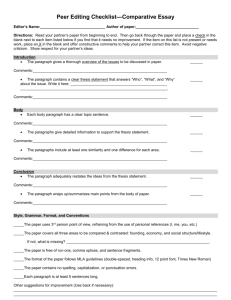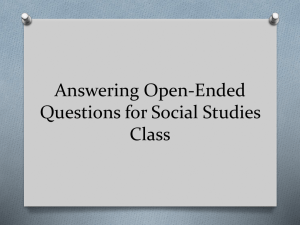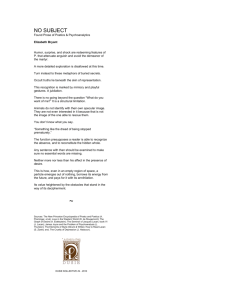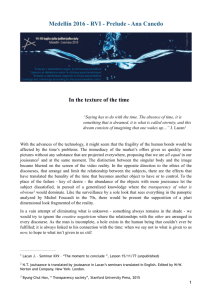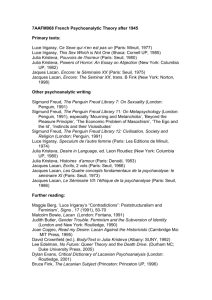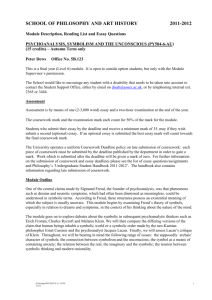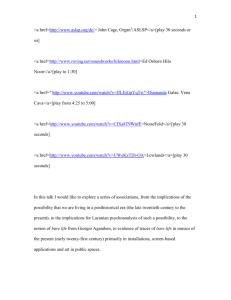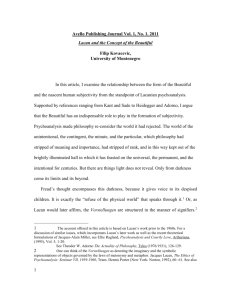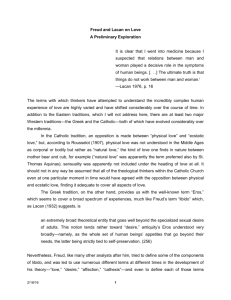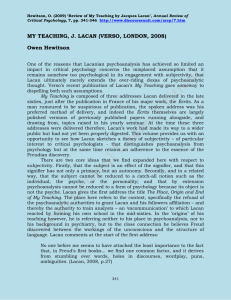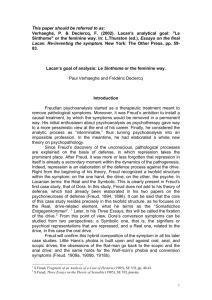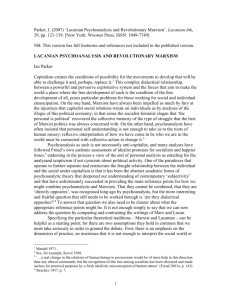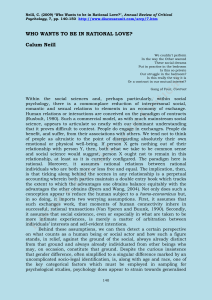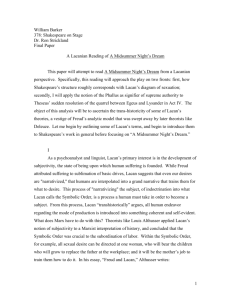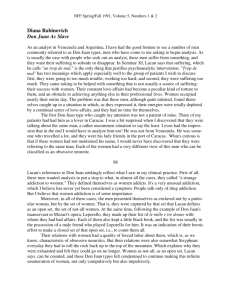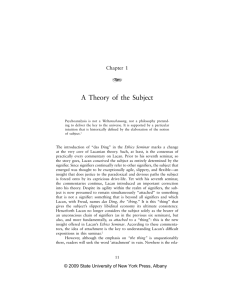Essay - Maite Space
advertisement
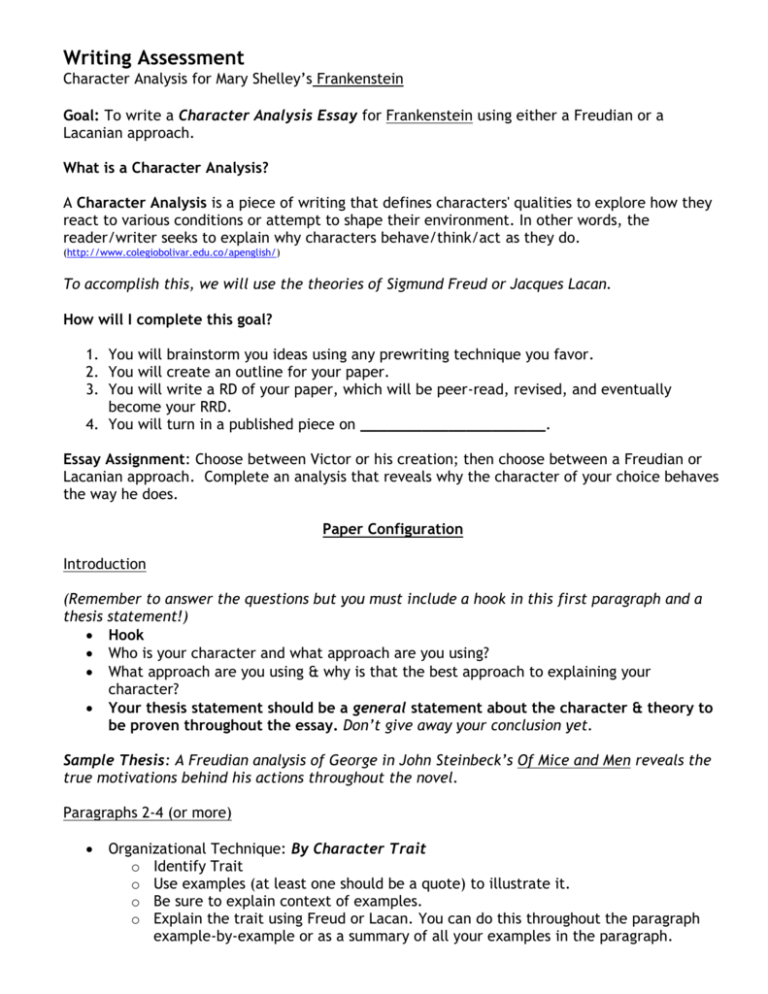
Writing Assessment Character Analysis for Mary Shelley’s Frankenstein Goal: To write a Character Analysis Essay for Frankenstein using either a Freudian or a Lacanian approach. What is a Character Analysis? A Character Analysis is a piece of writing that defines characters' qualities to explore how they react to various conditions or attempt to shape their environment. In other words, the reader/writer seeks to explain why characters behave/think/act as they do. (http://www.colegiobolivar.edu.co/apenglish/) To accomplish this, we will use the theories of Sigmund Freud or Jacques Lacan. How will I complete this goal? 1. You will brainstorm you ideas using any prewriting technique you favor. 2. You will create an outline for your paper. 3. You will write a RD of your paper, which will be peer-read, revised, and eventually become your RRD. 4. You will turn in a published piece on _____________________. Essay Assignment: Choose between Victor or his creation; then choose between a Freudian or Lacanian approach. Complete an analysis that reveals why the character of your choice behaves the way he does. Paper Configuration Introduction (Remember to answer the questions but you must include a hook in this first paragraph and a thesis statement!) Hook Who is your character and what approach are you using? What approach are you using & why is that the best approach to explaining your character? Your thesis statement should be a general statement about the character & theory to be proven throughout the essay. Don’t give away your conclusion yet. Sample Thesis: A Freudian analysis of George in John Steinbeck’s Of Mice and Men reveals the true motivations behind his actions throughout the novel. Paragraphs 2-4 (or more) Organizational Technique: By Character Trait o Identify Trait o Use examples (at least one should be a quote) to illustrate it. o Be sure to explain context of examples. o Explain the trait using Freud or Lacan. You can do this throughout the paragraph example-by-example or as a summary of all your examples in the paragraph. OR Paragraphs 2-4 (or more) Organizational Technique: By Psychological Theory o Identify aspect of Freud or Lacan you will examine. o Use examples (at least one should be a quote) to illustrate how the character reflects that aspect of the theory. o Be sure to explain context of examples. o Explain the trait using Freud or Lacan. You can do this throughout the paragraph example-by-example or as a summary of all your examples in the paragraph. Whichever organizational technique you choose, remember to close each paragraph and use a transition at the beginning of the next, or use the last sentence to transition to the next idea. Conclusion Close your essay by restating your thesis – this time by drawing a more specific conclusion about how your chosen theory explains the character. Synthesize your psychological analysis to show how your theory explains the character as a whole. End by giving your analysis meaning. For example, show how your analysis can serve as a psychological warning for all of us. Sample Restated Thesis: Taken as a whole, Freud’s theory of the id and ego serve to show that while George wants to deal with Lennie with fairness, he simply cannot, leading to his final decision of selfishness. How do I cite? Even if you are summarizing a part in the book, you will cite that information. Direct quotes, of course, have to be cited. When citing information, you must put the parenthesis outside of any quotation marks and put the punctuation for the sentence after the parenthesis. If you are using a direct quote and you don’t introduce the author you must put the author’s last name in parenthesis with the page number. If you have introduced the author in the sentence before putting in your direct quote, you just need to put the page numbers in parenthesis. Citation Example: Wordsworth stated that Romantic poetry was marked by a "spontaneous overflow of powerful feelings" (263). Romantic poetry is characterized by the "spontaneous overflow of powerful feelings" (Wordsworth 263). Wordsworth extensively explored the role of emotion in the creative process (263). [Example was taken from http://owl.english.purdue.edu/owl/resource/747/02/] Works Cited Page You must include a Works Cited page when you turn in your Character Analysis essay. It should look like this: Works Cited Shelley, Mary. Frankenstein. New York: HarperCollins, 1993. Print Other MLA Tidbits Your entire paper should be double spaced, Times New Roman 12-pt font. The margins of your paper should be set to 1” all around. You can underline or italicize the book title, but you must keep it this way throughout your paper. Your title should be centered, but not bold, italicized, or underlined. It should still be 12-pt font. Each page needs a header which should be your LAST name and the page number Go to View on your toolbar. Select. Under View select Header and Footer. Align your cursor right by using the align right button next to the bold, italics and underline keys. Type your Last name and hit the space bar 5 times. In the Header and Footer pop up menu choose the button with the pound sign (#) without the hand. This will insert your page numbers. Close the Header and Footer pop up menu. Some things to look for when evaluating your work for revision and editing: Have I… ________ ________ ________ ________ ________ ________ ________ ________ ________ ________ ________ presented a clear picture of my character’s personality? conveyed a main impression of the character as revealed by the psychological lens I am using without giving the entire paper away? (Thesis Statement) shown how the thoughts, dialogue, actions, reactions of the character can be explained through your psychological lens? come to a conclusion that uses your psychological lens to explain the character as a whole? used a clear organizational scheme? How about transitional words and phrases? supported every point with text, examples, and full explanations? included a compelling introduction and strong conclusion? created a coherent response, meaning can a reader understand EVERYTHING I am saying? limited my use of personal pronouns, meaning do you not know who the writer is talking about due to using pronouns such as him, her, she, he, it, etc.? avoided any fragments and run-ons as well as any errors in writing conventions (spelling, punctuation, and capitalization) in my piece? used strong academic diction and sophisticated sentence variety.


